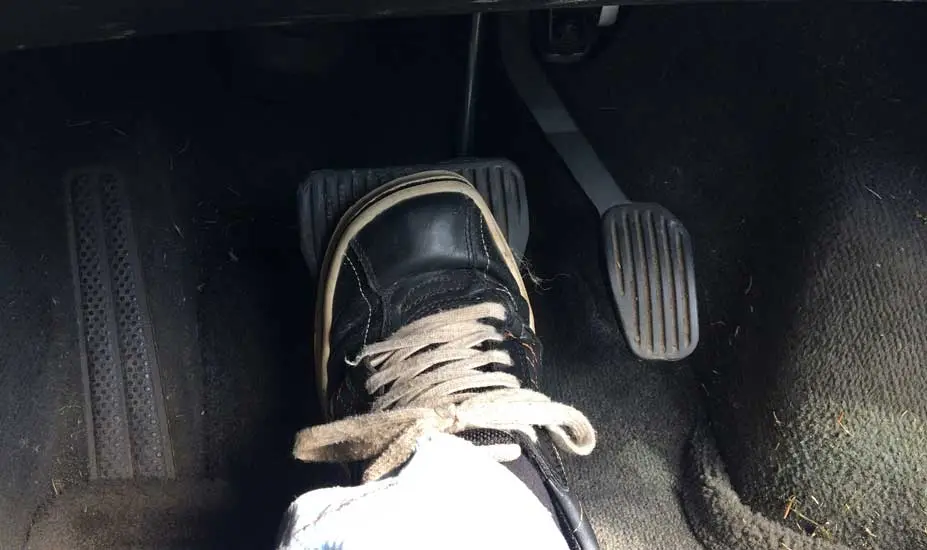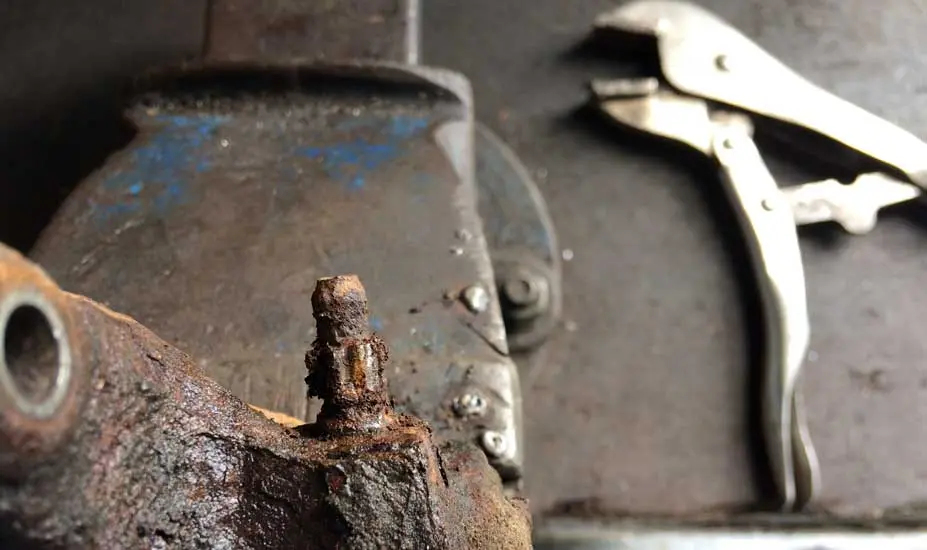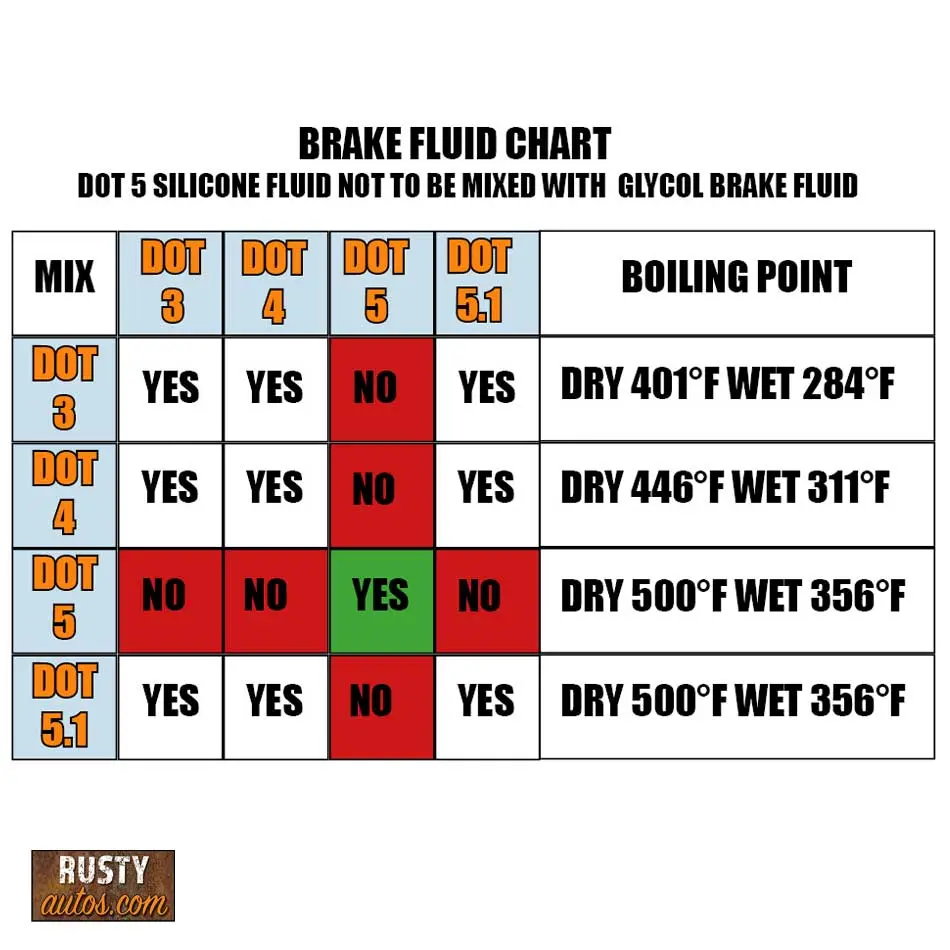Brake system air is a real pain if you don’t know how to fix it. I’m a mechanic for over twenty years and brake jobs are the most common type of repair I do. You are in the correct place and very soon you’ll know how to safely remove air from your brake system.
Hydraulic brake systems are sealed and as such, the air has no way to escape unless purged from the system in a process known as brake bleeding. Special brake bleeding tools are commonly used to bleed brakes but good results may be achieved with a two-man pump and purge process.
In this post you’ll learn why the air in the brake system won’t simply go away, you’ll also learn common ways to bleed the brake system.
Air In The Brakes System

The air inside the brake lines is a common problem and for most, it’s a thirty-minute problem to solve. But unfortunately, the air won’t simply leave the system by itself and that’s because the system is sealed.
The master cylinder which lives just below the brake fluid reservoir acts as a valve to hold fluid inside the system. In a healthy brake system, when the brake pedal is applied fluid is forced through the lines where the pressure pushes the caliper pistons out and applies the brake pads to the spinning rotors.
In a system contaminated with air, when the brake pedal is applied, fluid is forced through the lines as before. But as the pressure builds, it compresses pockets of trapped air in the lines, so instead of pushing the caliper pistons out, the brake pedal sinks alarmingly to the floor.
The only fix is to remove the trapped air from the system and to do that we’ll need to perform a brake bleed procedure. More on that below.
You may find the brake resources page useful, it’s a fluff-free guide to DIY brake repairs.
How To Bleed The Brakes
Bleeding the brakes isn’t a difficult job but there is a set procedure that must be followed. There are several ways to bleed a brake system, some will require special tools, and (you can check them out on the brake tools page) some will require a helper.
We’ll cover your options here.
- Two man brake bleed procedure
- Gravity bleeding
- Vacuum bleed

1 Two-man brake bleeding – I was introduced to this type of brake bleeding procedure as a kid. On summer holidays I worked in my father’s garage, where I was often the brakeman even though I could barely reach the brake pedal.
To successfully execute the bleed procedure, you’ll need a helper, catch bottle clear hose, WD40, and box-end wrench.
- Begin by topping up brake fluid level.
- Start bleeding the wheel farthest from the brake fluid reservoir, that’s the right hand rear for most.
- Remove the right hand rear wheel if necessary, locate the bleed valve, use a wire brush to clean the road grit from the threads.
- Place the box end wrench on the valve and then push the clear hose onto the vale and the other end into the catch bottle.
- Have the helper pump the brake pedal three to four times and then hold the pedal to the floor.
- Spray Wd40 around the bleed valve threads and go ahead and open the bleed valve to release the fluid into the catch bottle.
Repeat this two to three times per wheel, topping up the fluid reservoir between wheels.

It is possible to solo this bleed procedure. Quarter-fill a clean catch bottle with brake fluid and place the hose on the valve and below the fluid level in the bottle. Open the valve and apply two to three gentle pumps on the pedal.
Check the bleed hose for bubbles. If all is well, close the valve and move to the next wheel.

2 Gravity bleeding – I don’t use this type of bleed procedure but it does work.
- Start bleeding the wheel farthest from the brake fluid reservoir, that’s the right hand rear for most.
- Remove the right hand rear wheel if necessary, locate the bleed valve, use a wire brush to clean the road grit from the threads.
- Place the box end wrench on the valve and then push the clear hose onto the vale and the other end into the catch bottle quarter filled with fresh fluid and the hose below the fluid level.
- Spray Wd40 around the bleed valve threads, go ahead and open the bleed valve to release the fluid into the catch bottle.
- Check and top up reservoir fluid regularly. Gravity bleeding takes time, check the hose for air pockets, when the hose runs free from bubbles, lock up the valve and move to the next wheel.
3 Vacuum bleeding – This type of bleed procedure requires a brake bleeding tool. It basically vacuums the fluid through the bleed valve with the need for a helper or pumping the brake pedal. I’ve listed a vacuum bleeder here on the Brake repair tools page.
A variation on this method is a pressurized reservoir that employs compressed air to push fluid through the system, the mechanic simply needs to open the valves in sequence.
Car Brakes Won’t Bleed

If you are having difficulty maintaining a good brake pedal, you may have a leak in the system. A fluid leak should be obvious but only if the underside of the vehicle is dry. A leak is a cause for concern and requires immediate attention.
Common causes of fluid leaks include:
- Corroded brake lines
- Bleed valve leaks
- Worn wheel piston/cylinder seal
- Perished flexi brake hose
- Impact damage to steel brake lines
Old brake lines are always a cause for concern. Use a scraping tool to check the walls for corrosion, I’ve listed one on the brake tools page, and if you need brake system parts check out the Amazon link below.
Amazon Vehicle Brake System PartsOther common brake issues include:
- Brake fluid is hygroscopic, and old fluid becomes saturated with moisture and that will affect brake pedal feel
- Fitting new calipers on the wrong side of the vehicle is a common cause of hard to bleed brakes. The valves should always be at the top of the caliper, as that’s where the trapped air will gravitate
- Faulty master cylinder
Check out all my favorite tools on the Mechanics tools page

- About the Author
- Latest Posts
John Cunningham is an Automotive Technician and writer on Rustyautos.com. He’s been a mechanic for over twenty-five years and has worked for GM, Volvo, Volkswagen, Land Rover, and Jaguar dealerships.
John uses his know-how and experience to write fluff-free articles that help fellow gearheads with all aspects of vehicle ownership, including maintenance, repair, and troubleshooting.

